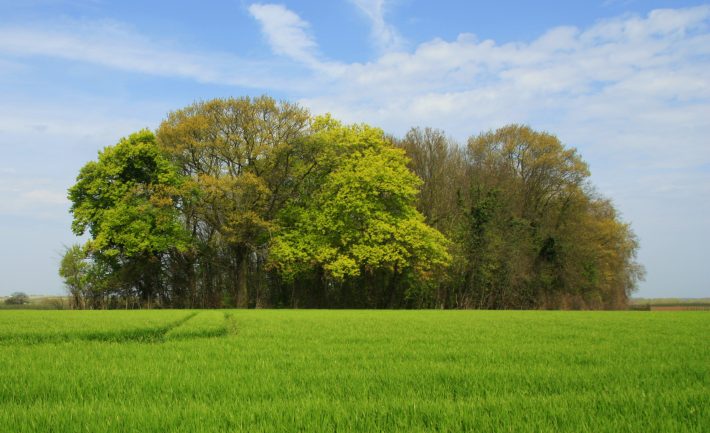Tiny woodlands are more important than previously thought
Small woodlands in farmland have more benefits for humans per area compared to large forests according to a new study published in the Journal of Applied Ecology.

Small woodlands, sometimes even smaller than a football field, can easily go unnoticed in agricultural landscapes. Yet, these small forest remnants can store more carbon in the topsoil layer, are more suitable for hunting activities and host fewer ticks than large forests, making them good contributors to human well-being.
“The value of these tiny forests has never been unravelled before, although the occurrence of small woodlands in agricultural landscapes has increased due to forest fragmentation”
– says Alicia Valdés, one of the authors of the study.
The reason why these tiny woodlands may provide us with more services is because they naturally have more edges exposed to the influence of the surrounding environment.
“For example, there is more food supply for roe deer, such as blueberries and seedlings of birch and oak, because edges receive more sunlight and nutrients from the surrounding farmlands. This in turn, is predicted to attract more roe deer that can be hunted by humans”, says Alicia Valdés.
These tiny forests can also store more carbon per area in the topsoil layer than older big woodlands, because they have an increased soil biological activity, which makes them faster at absorbing organic matter. Potentially these can act as better carbon sinks and help counterbalance the effects of global warming.
Another benefit of the tiny forests is that they represent a lower risk of contracting a tick-borne disease. This is because fewer tick larvae can survive in the dry and hot environments characterizing woodland edges.
“This is just a prediction of all the potential benefits. How people would use these is something that needs to be looked into”, says Alicia Valdés.
Now that the authors have found that the smaller woodlands are of greater value than previously thought, they argue that more conservation efforts are needed to maintain their important role and value in agricultural landscapes.
“Preserving the large forests is important because of their higher biodiversity, but conserving smaller woodlands, especially the older ones, will help to increase human well-being in agricultural landscapes. These small woodlands need specific policy instruments ensuring their future conservation”, says Alicia Valdés.
The study examined 224 forest patches across temperate Europe (France, Belgium, Germany and Sweden). The diversity of six different organism groups (understory herbs, mushroom, ground beetles, spiders, woodlice and millipedes) was examined, and the potential of each woodland to provide five ecosystem services (abundance of usable plants, stemwood volume, pest control potential, topsoil carbon storage and game production potential) and one disservice (tick-borne disease).
Read the article for free (for a limited time) here:
, , , et al. High ecosystem service delivery potential of small woodlands in agricultural landscapes. J Appl Ecol. 2019; 00: 1– 13. https://doi.org/10.1111/1365-2664.13537
Media Contacts:
Researcher CNRS | Jonathan Lenoir | T 03 22 82 54 67 | 07 62 82 94 40 | jonathan.lenoir@u-picardie.fr
Project Leader | Prof. Guillaume Decocq |T 03 22 82 77 61| guillaume.decocq@u-picardie.fr
Press Officer CNRS l Julien Guillaume | T 01 44 96 46 35 | presse@cnrs.fr, julien.guillaume@cnrs.fr
Like what we stand for?
Support our mission and help develop the next generation of ecologists by donating to the British Ecological Society.